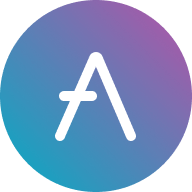BlockDAG's Revolutionary Approach to Blockchain Scalability and Its Competitive Edge in the Crypto Space
Introduction to BlockDAG: A Game-Changer in Blockchain Scalability
The blockchain industry has long struggled with the "blockchain trilemma," which involves balancing decentralization, security, and scalability—three essential pillars of any blockchain network. BlockDAG, an innovative project in the crypto space, is addressing this challenge with a groundbreaking approach. By combining the security of Proof-of-Work (PoW) with the efficiency of a Directed Acyclic Graph (DAG) structure, BlockDAG is redefining blockchain scalability and transaction speed.
In this article, we’ll explore BlockDAG’s technical innovations, its presale success, and how it compares to major players like Ethereum (ETH), Aave (AAVE), Solana, and VeChain. We’ll also examine broader market trends shaping the competitive landscape of Layer 1 and DeFi projects.
BlockDAG’s Technical Innovations: Merging PoW Security with DAG Scalability
BlockDAG’s architecture is its most compelling feature. Unlike traditional blockchains that rely on a linear chain of blocks, BlockDAG employs a Directed Acyclic Graph (DAG) structure. This allows multiple blocks to be processed simultaneously, significantly increasing transaction throughput and network efficiency.
Key Features of BlockDAG’s Architecture
Proof-of-Work Security: By integrating PoW, BlockDAG ensures robust security, making it resistant to attacks while maintaining decentralization.
EVM Compatibility: BlockDAG is fully compatible with the Ethereum Virtual Machine (EVM), enabling developers to migrate their decentralized applications (dApps) seamlessly.
Scalability Without Sacrificing Decentralization: The DAG structure allows for faster transactions without compromising the decentralized nature of the network.
This unique combination of PoW and DAG sets BlockDAG apart from other Layer 1 solutions, offering a blend of security and scalability that few projects can match.
BlockDAG’s Presale Highlights: A Glimpse Into Its Market Potential
BlockDAG’s presale has captured significant attention in the crypto community. With a limited-time price of $0.0016 per token, the project has already raised over $333 million, selling more than 23.7 billion tokens. Early adopters are eyeing a potential ROI of 3,000% to 3,025% upon launch.
Incentives Driving Community Engagement
BlockDAG has introduced several innovative incentives to attract early participants:
$2 Million Summer Raffle: A tiered reward system offering participants the chance to win substantial prizes, fueling excitement and engagement.
QR-Based Miner Bonuses: By integrating QR-based rewards, BlockDAG incentivizes miners to contribute to the network, ensuring its long-term sustainability.
These strategies not only enhance community engagement but also position BlockDAG as a forward-thinking project in the competitive crypto landscape.
Ethereum (ETH): The Benchmark for DeFi, NFTs, and Smart Contracts
While BlockDAG is making waves, Ethereum remains the dominant player in the blockchain space. Known for its pioneering role in decentralized finance (DeFi), non-fungible tokens (NFTs), and smart contracts, Ethereum continues to lead despite emerging competition.
Ethereum’s Strengths
Deflationary Supply Post-Merge: Ethereum’s transition to Proof-of-Stake (PoS) has introduced a deflationary supply trend, making it an attractive option for long-term holders.
Layer 2 Solutions: Platforms like Arbitrum and Optimism are reducing transaction fees and improving speeds, ensuring Ethereum’s relevance in an increasingly competitive market.
Developer Activity: Ethereum boasts one of the most active developer communities, driving continuous innovation and adoption.
However, Ethereum’s high gas fees and slower transaction speeds remain challenges, especially as faster chains like Solana gain traction.
Aave (AAVE): A Leader in Decentralized Lending and Borrowing
Aave has established itself as a leading DeFi protocol, offering decentralized lending and borrowing services. Its V3 upgrade introduced features like cross-chain liquidity and improved risk management, further solidifying its position in the market.
Governance and Multi-Chain Expansion
Governance Model: Aave’s governance model allows token holders to influence protocol upgrades, fostering a sense of community ownership.
Multi-Chain Expansion: Aave’s expansion to multiple chains like Avalanche and Polygon has reduced costs and increased accessibility, making it a versatile option for users.
Solana: Speed and Low Fees, But Reliability Concerns Persist
Solana is often highlighted for its fast transactions and low fees, making it a popular choice for NFT and DeFi projects. However, its history of network outages has raised questions about its reliability.
Strengths and Weaknesses
Strengths: High throughput and low transaction costs make Solana an attractive option for developers and users.
Weaknesses: Network outages have dented its reputation, highlighting the need for improved stability.
VeChain: Real-World Applications in Supply Chain Management
VeChain stands out for its focus on real-world utility, particularly in supply chain management. With partnerships involving major companies like Walmart China and BMW, VeChain has carved a niche for itself in the blockchain ecosystem.
Dual-Token Model
VeChain’s dual-token system (VET and VTHO) separates payment and gas fees, offering a unique approach to transaction management. While it may not receive as much attention as BlockDAG or Ethereum, its practical applications make it a noteworthy project.
Market Trends and Competitive Positioning
The blockchain space is becoming increasingly competitive, with Layer 1 and DeFi projects vying for market share. Key trends include:
Scalability Solutions: Projects like BlockDAG are focusing on scalability to address the limitations of traditional blockchains.
Community Engagement: Incentives like BlockDAG’s Summer Raffle and Aave’s governance model are becoming essential for building loyal user bases.
Interoperability: Multi-chain solutions are gaining traction, enabling seamless interaction between different blockchain networks.
Conclusion: BlockDAG’s Role in the Evolving Blockchain Landscape
BlockDAG’s innovative approach to scalability, combined with its robust presale performance and community incentives, positions it as a strong contender in the blockchain space. While established players like Ethereum, Aave, Solana, and VeChain continue to dominate, BlockDAG’s unique blend of PoW security and DAG efficiency offers a fresh perspective on blockchain technology.
As the crypto market evolves, projects that prioritize scalability, security, and community engagement will likely shape the future of the industry. BlockDAG’s early success suggests it could be one of those projects, but its long-term impact will depend on its ability to deliver on its promises and adapt to the competitive landscape.



